Links to external sources may no longer work as intended. The content may not represent the latest thinking in this area or the Society’s current position on the topic.
Multi-resolution simulations of intracellular processes
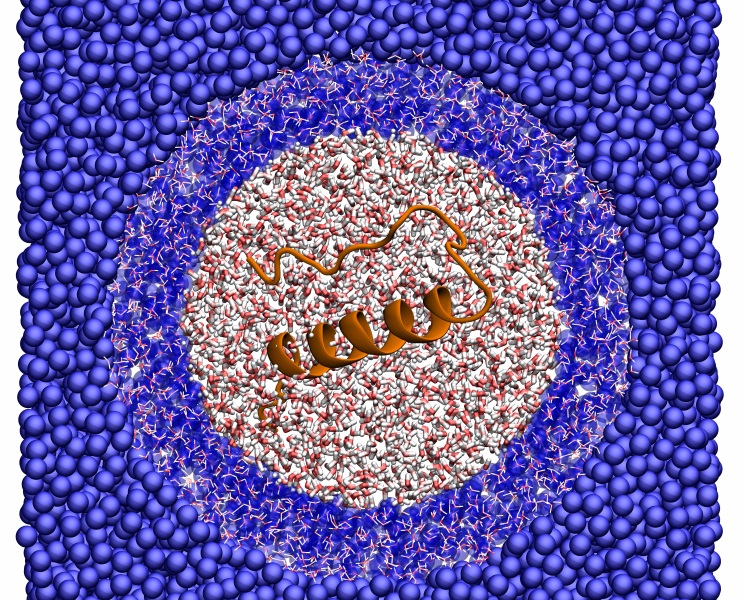
Theo Murphy international scientific meeting organised by Professor Radek Erban, Dr Sarah Harris and Dr Raffaello Potestio.
Multi-resolution methods for spatio-temporal modelling of intracellular processes have potential to bridge the gap between all-atom molecular dynamics simulations and stochastic reaction-diffusion models in the macroscopic limit. This scientific meeting brought together mathematicians, biophysicists and computational biologists to discuss the development of new multi-resolution methods, the analysis of their accuracy, convergence and efficiency, and biological applications.
The schedule of talks and speaker biographies are available below. Recorded audio of the presentations will be available on this page after the meeting has taken place.
Enquiries: contact the Scientific Programmes team
Organisers
Schedule
Chair

Professor Radek Erban, University of Oxford, UK

Professor Radek Erban, University of Oxford, UK
Professor Radek Erban is a Royal Society University Research Fellow, a Professor of Mathematics at the University of Oxford and a Fellow of Merton College, Oxford. He works on the development, analysis and application of mathematical and computational methods to a broad range of real-world systems, with a focus on problems in which stochastic effects and multiscale phenomena play a key role. The main application areas include molecular-based modelling of intracellular processes (for example, actin dynamics and calcium dynamics) and studying collective behaviour of cells, animals and robots. In recent years, he focused his attention on multi-resolution methods which would enable simulation of complex intracellular processes (which take place across the whole living cell) with fine resolution of molecular dynamics. He received a European Research Council Starting Grant in 2009 and a Philip Leverhulme Prize in 2010. In Oxford, he previously held junior research fellowships at Brasenose College (2011-2014), Somerville College (2008-2011) and Linacre College (2005-2008). In Cambridge, he was also a visiting fellow of Peterhouse (2016) and a recipient of the Simons Foundation Fellowship at the Isaac Newton Institute in 2016.
| 09:00 - 09:05 | Welcome by the Royal Society and organisers | |
|---|---|---|
| 09:05 - 09:30 |
Polymer/lipids membranes
Block copolymers are largely used in pharmacological formulation and may represent a breakthrough in the development of controlled drug/gene release systems or cell activities regulators. The identification of the key molecular interactions responsible for the destabilization of the cell membrane represents the first milestone towards a rational design of these biomaterials. Modelling can guide the understanding of the effect that biological active copolymers have on the structure and stability of lipid membranes. This talk will focus on a specific family of amphiphilic block copolymer known as Pluronic and will clarify the mechanism of membrane adhesion and breakage and their effect on the phase diagram of the lipid bilayers. The simulations reveal that the incorporation of the polymer chains leads to membranes that can sustain increasing mechanical stresses. Analysis of mechanical, structural, and dynamic properties of the membrane shows that the polymer chains interact strongly with the lipids in the vicinity, restraining their mobility and imparting better mechanical stability to the membrane. The hybrid membranes under tension remain thicker, more ordered, and stiffer in comparison to their lipid analogues. Trans-bilayer lipid movements (flip-flop) are observed and appear to be triggered by the presence of the polymer chains. A careful analysis of the pore formation under high tensions reveals two distinctive mechanisms that depend on the distribution of the hydrophilic polymer blocks in the bilayer. Finally, Dr Carbone will show that the incorporation of the polymers modifies the nature of the liquid/gel phase transition of the membrane. 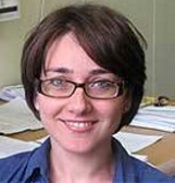
Dr Paola Carbone, University of Manchester, UK

Dr Paola Carbone, University of Manchester, UKPaola obtained her PhD in Material Science from "Universita' Bicohcca". In 2006 she was awarded a fellowship from the Humboldt Foundation and joined the group of Prof. Mueller-Plathe in Darmstadt, where she extended her experties toward the multiscale simulations of macromolecules. In 2008 Paola was awarded a RCUK fellowship and joined the School of Chemical Engineering and Analytical Science in the University of Manchester where since 2014 she is a Senior Lecturer. Her research is focused on using and developing state-of-art simulation techniques to predict materials properties in bulk, solutions and at interfaces. |
|
| 09:30 - 09:45 | Discussion | |
| 09:45 - 10:15 |
Addressing the dynamics of Flaviviruses with multiscale simulations
Multi-resolution simulations combine the best of two worlds by keeping detailed information on specific regions of interest while capturing the essence of less relevant parts of molecular systems. A simultaneous fine-grain (FG)/coarse-grain (CG)/supra-coarse grain (SG) simulation scheme, which maintains accuracy in the FG region at statistical precision, will be introduced in this talk. This framework can be used in combination with popular atomistic force fields or with the SIRAH force field for CG/SG simulations. Applications of this hybrid solvation method to comparative simulations of Zika, Dengue and Japanese Encephalitis viruses will be discussed. 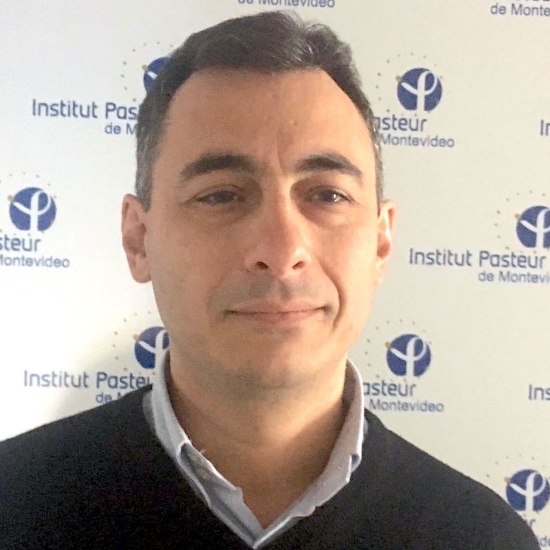
Sergio Pantano, Institute Pasteur, Montevideo, Uruguay

Sergio Pantano, Institute Pasteur, Montevideo, UruguaySergio Pantano graduated in Physics from the University of San Luis, Argentina and received his Masters and PhD from the Scuola Internazionale Superiore di Studi Avanzati (SISSA, Italy) in 2001, where he became interested in computational biology. In 2004 he was appointed as independent researcher at the Venetian Institute for Molecular Medicine (Padua, Italy) and as PI at the Institut Pasteur de Montevideo in 2007, where he currently leads the group of Biomolecular Simulations. Dr Pantano has applied a variety of structural bioinformatics and simulation methods to the study of molecular systems of biomedical relevance. His group pioneered the development of coarse-grained models for molecular dynamics simulations of biological systems in South America and has created the SIRAH force field for coarse grained and multiscale simulations. His main interests are currently the rational design of biosensors and dynamics of virus-like particles. |
|
| 10:15 - 10:30 | Discussion | |
| 10:30 - 11:00 | Coffee | |
| 11:00 - 11:30 |
Towards simulating a minimal cell: integration of experiment and theory
Ribosomes - the primary macromolecular machines responsible for translating the genome into proteins - are complexes of precisely folded RNA and proteins. The ways in which their production and assembly are managed by the living cell is of deep biological importance. Our whole-cell model of ribosome biogenesis in a slowing growing bacteria includes the effects of growth, DNA replication, translation, ribosome assembly, and cell division. All biological processes are described in terms of reaction-diffusion master equations (RDME) and solved stochastically using the GPU-based Lattice Microbes simulation software over a cell cycle. The replication parameters are derived from single cell measurements of gene copy numbers in a series of E. coli strains with fluorescently labeled genes as a function of cell length and time. The work on biogenesis can now be linked with the essential metabolism of a minimal bacterial cell, JCVI-Syn3A. To treat processes at biologically relevant length- (microns), time- (hours), and concentration- (nanomolar to millimolar) scales requires hybrid RDME simulations. Professor Luthey-Schulten will report on our efforts to develop a complete kinetic model of a minimal bacterial cell. 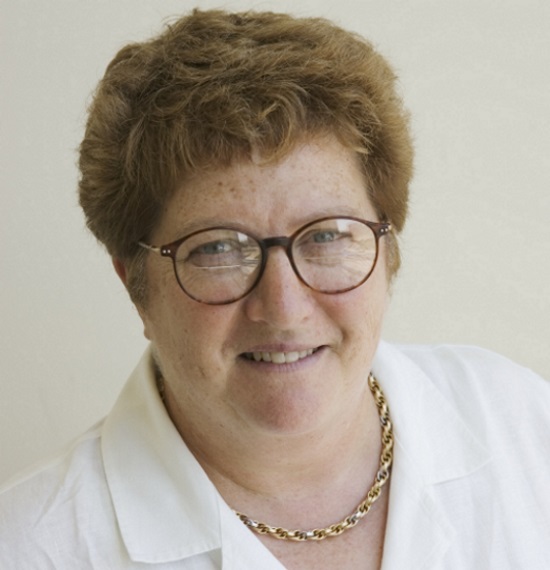
Professor Zan Luthey-Schulten, University of Illinois, USA

Professor Zan Luthey-Schulten, University of Illinois, USAProfessor Zaida (Zan) Luthey-Schulten is a Lycan Professor of Chemistry and the Co-Director of the NSF Center for the Physics of Living Cells at the University of Illinois at Urbana-Champaign. Her research group specializes in the development of spatially resolved stochastic cell simulations methods that are distributed through the Lattice Microbe (LM) software. Being GPU-based, LM is able to simulate cellular processes at biologically relevant length (microns), time (hours), and concentration (nM to mM) scales. The most recent applications to whole cell simulations of a minimal bacterial cell and to the functions of a genetic switch in yeast will be reported. |
|
| 11:30 - 11:45 | Discussion | |
| 11:45 - 12:15 |
Langevin dynamics, parameterization, and Cucker-Smale flocking
Langevin dynamics is a family of stochastic models that facilitate computational study of complex systems in the presence of unresolved subscale interactions; as such, it is a key tool for biological simulation from nano to macro scales. In this talk Professor Leimkuhler will describe the recent work on the mathematical underpinnings of Langevin dynamics, ranging from foundations to parameterisation to numerical analysis. As an example, Professor Leimkuhler will describe a simple stochastic model relevant for flocking/streaming in biological systems. 
Professor Ben Leimkuhler, University of Edinburgh, UK

Professor Ben Leimkuhler, University of Edinburgh, UKBen Leimkuhler is the Professor of Applied Mathematics at the University of Edinburgh. His work is primarily in deterministic and stochastic algorithms for scientific computing and data science, including numerical analysis, model formulation and software development. He is known for his previous contributions to efficient molecular and particle simulation. He is a fellow of The Alan Turing Institute, the UK’s new data-science centre, which supports his work on machine learning procedures based on stochastic differential equations. |
|
| 12:15 - 12:30 | Discussion |
Chair

Professor Raffaello Potestio, University of Trento, Italy

Professor Raffaello Potestio, University of Trento, Italy
Raffaello Potestio graduated in Physics from the University of Rome “La Sapienza” in 2006, with a Master Thesis on Lattice Quantum Chromodynamics under the supervision of G. Martinelli. In the same year he enrolled in a PhD course in Statistical Physics at the International School for Advanced Studies (SISSA-ISAS) in Trieste. In 2010 he defended his PhD Thesis on Coarse-grained models of protein structure and interactions, supervised by C. Micheletti. In November 2010 he entered as postdoc the group of K. Kremer at the Max Planck Institute for Polymer Research in Mainz, where in August 2013 he became Project Leader of the Statistical Mechanics of BioMolecules group.
In 2017 Raffaello Potestio was awarded an ERC Starting Grant for the VARIAMOLS project on the development and application of variable resolution modeling strategies to the computational study of large biomolecules. The project will be carried out in the Physics Department of the University of Trento, Italy, where he is enrolled as tenure track assistant professor.
Raffaello Potestio’s main research interest since during the PhD has been the development and application of coarse-grained models and coarse-graining strategies for soft matter, in particular biologically relevant systems. The two-sided, complementary goals of this approach are to understand the most fundamental and/or universal features of a system and, at the same time, to improve the computational efficiency of a simulation. He also work on the study of topologically self-entangled biopolymers, namely knotted proteins and DNA. To this end, he makes use of standard and ad hoc coarse-grained models developed specifically for the systems under examination.
| 13:30 - 14:00 |
Unravelling the activation of neuroreceptors at the molecular level
Pentameric ligand-gated ion channels (pLGICs), embedded in the membrane of nerve cells, important neuroreceptors that mediate fast synaptic transmission, are involved in several neurological disorders and are target sites for drugs and, in invertebrates, insecticides. However, there is little idea of how they function at the molecular level due to their complexity, limited experimental information and the challenges they pose to simulations. The group has investigated the first crucial step of their activation mechanism, which consists in the binding of a neurotransmitter to their extracellular domain, focusing of the prototypical case of the neurotransmitter GABA binding to the insect RDL receptor, which is linked to the resistance to the insecticide dieldrin. Using the "funnel-metadynamics" computational technique, which efficiently enhances the sampling of bound and unbound states using a funnel-shaped restraining potential to limit the exploration in the solvent, Professor Molteni describes the binding free energy landscape, identified the chain of events leading the neurotransmitter from the solvent into the binding-pocket and estimated the binding affinity. Moreover, the talk will show how this landscape is disrupted by mutations which prevent the receptor to function. The group also assessed the potential of a trans-cis proline switch for the gating of the ion channel, in the case of the 5-HT3 receptor, which is activated by serotonin. The RDL and the 5-HT3 receptors share structural and functional features with other pLGICs, hence this work provides valuable protocols to study the activation mechanisms of pLGICs at the molecular level beyond conventional docking and molecular dynamics techniques. 
Professor Carla Molteni, King's College London, UK

Professor Carla Molteni, King's College London, UKCarla Molteni is Professor of Physics at King's College London. She is an expert in atomistic simulations applied to materials and biological systems, and works at the interface of physics with chemistry, materials science and biology. Before joining King's, she held an EPSRC Advanced Research Fellow at the Cavendish Laboratory, University of Cambridge, and a College Research Fellowship at New Hall (now Murray Edwards College). She was previously a postdoctoral researcher at the Max Planck Institut fuer Festkoerperforschung in Stuttgart (Germany) and a EU Human Capital & Mobility Postdoctoral Fellow at the Cavendish Laboratory. She obtained her Laurea and PhD in Physics at the University of Milan (Italy). |
|
|---|---|---|
| 14:00 - 14:15 | Discussion | |
| 14:15 - 14:45 |
Multi-scale simulations of neuronal G-protein coupled receptors
Human G-protein coupled receptors (GPCRs) constitute a large membrane receptor superfamily. About half of those (~420) recognize taste and odorant molecules. These “chemical senses” GPCRs are involved in a variety of physiological processes and they constitute promising targets for pharmaceutical intervention. Here, Professor Carloni will present recent multi-resolution (coarse-grain/molecular mechanics) simulations studies, which lead to predictions of agonists’ binding to the receptors, consistently with molecular biology experiments. The talk will conclude that multi resolution approaches as that present here may assist structural predictions of membrane proteins, like chemical senses GPCRs, for which experimental structural information is lacking. 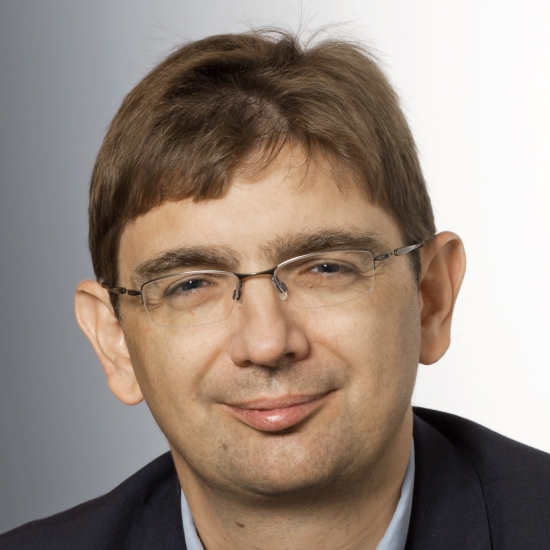
Professor Paolo Carloni, Forschungszentrum Jülich, Germany

Professor Paolo Carloni, Forschungszentrum Jülich, GermanyPaolo Carloni obtained his PhD in Chemistry (majoring in computational biophysics) at the University of Florence in 1993 supervised by Lucia Banci, Pier Luigi Orioli (University of Florence, Italy) and Michele Parrinello (then IBM Zurich Research Laboratory, Switzerland). Currently, he is a full professor in Theoretical Biophysics at RWTH Aachen and Director of the 'Computational Biomedicine' Institute (IAS-5 / INM-9) and co-director of INM-11 at Forschungszentrum Jülich. His research focuses on molecular simulations and bioinformatics approaches to molecular biophysics, molecular medicine and structural genomics. He has published more than 240 papers, one edited book. He has given more than one hundred fifty seminars and colloquia delivered throughout the world at the major universities, research and industrial laboratories and professional meetings. In addition, he has organized a dozen of international conferences. Paolo Carloni is a member of the Editorial Advisory Board for the Journals: Proteins: Structure, Function, Bioinformatics and PlosONE. Moreover, he is a member of the PRACE Scientific Steering Committee and the JARA-HPC (Jülich Aachen Research Alliance focusing on high performance computing) initiative. Over the years his research has been funded by several grants provided by the Regione Friuli Venezia Giulia, the Italian University Ministry, the Italian Institute of Technology, the HFSP, pharmaceutical and food companies (Illy, Glaxo, Layline Genomics), the National Institute for the Physics of Matter, the German Science Foundation DFG, the German Federal Ministry for Education and Research BMBF and the European Commission. |
|
| 14:45 - 15:00 | Discussion | |
| 15:00 - 15:30 | Tea | |
| 15:30 - 16:00 |
Coupling molecular dynamics simulations with Brownian dynamics
Professor Erban will discuss mathematical and computational methods for spatio-temporal modelling in molecular and cell biology, including all-atom and coarse-grained molecular dynamics (MD), Brownian dynamics (BD), stochastic reaction-diffusion models and macroscopic mean-field equations. Microscopic (BD, MD) models are based on the simulation of trajectories of individual molecules and their localized interactions (for example, reactions). Mesoscopic (lattice-based) stochastic reaction-diffusion approaches divide the computational domain into a finite number of compartments and simulate the time evolution of the numbers of molecules in each compartment, while macroscopic models are often written in terms of mean-field reaction-diffusion partial differential equations for spatially varying concentrations. The discussion will cover the development, analysis and applications of multi-resolution methods for spatio-temporal modelling of intracellular processes, which use (detailed) BD or MD simulations in localized regions of particular interest (in which accuracy and microscopic details are important) and a (less-detailed) coarser model in other regions in which accuracy may be traded for simulation efficiency. Professor Erban will discuss error analysis and convergence properties of the developed multi-resolution methods, their software implementation and applications of these multiscale methodologies to modelling of intracellular calcium dynamics, actin dynamics and DNA dynamics. Professor Erban will also discuss the development of multiscale methods which couple MD and coarser stochastic models in the same dynamic simulation. 
Professor Radek Erban, University of Oxford, UK

Professor Radek Erban, University of Oxford, UKProfessor Radek Erban is a Royal Society University Research Fellow, a Professor of Mathematics at the University of Oxford and a Fellow of Merton College, Oxford. He works on the development, analysis and application of mathematical and computational methods to a broad range of real-world systems, with a focus on problems in which stochastic effects and multiscale phenomena play a key role. The main application areas include molecular-based modelling of intracellular processes (for example, actin dynamics and calcium dynamics) and studying collective behaviour of cells, animals and robots. In recent years, he focused his attention on multi-resolution methods which would enable simulation of complex intracellular processes (which take place across the whole living cell) with fine resolution of molecular dynamics. He received a European Research Council Starting Grant in 2009 and a Philip Leverhulme Prize in 2010. In Oxford, he previously held junior research fellowships at Brasenose College (2011-2014), Somerville College (2008-2011) and Linacre College (2005-2008). In Cambridge, he was also a visiting fellow of Peterhouse (2016) and a recipient of the Simons Foundation Fellowship at the Isaac Newton Institute in 2016. |
|
| 16:00 - 16:15 | Discussion | |
| 16:15 - 17:00 |
Toward a refined electrostatic description for biomolecules simulations: introducing an effective pH and titration scheme to a coarse-grained nucleic acids model
Electrostatic interactions play a pivotal role in many (bio)molecular association processes. The molecular organization and function in biological systems are largely determined by these interactions from pure Coulombic contributions to more peculiar mesoscopic forces due to ion-ion correlation and proton fluctuations. By means of constant-pH Monte Carlo simulations based on a fast coarse-grained titration proton scheme, a new computer molecular model was devised to study protein-RNA interactions and compute local pka values for RNA molecules. Our results illustrate the importance of the charge regulation mechanism that enhances the association between biological macromolecules in a similar way as observed for other protein-polyelectrolyte systems typically found in colloidal science. Due to the highly negative charge of RNA, the effect is more pronounced in this system as predicted by the Kirkwood-Shumaker theory. These efficient calculations have now been coupled to coarse-grained simulations of nucleic acids to include the role of conformational changes. Professor Pasquali will present this work in progress to obtain pH-dependent coarse-grained nucleic acids simulations. 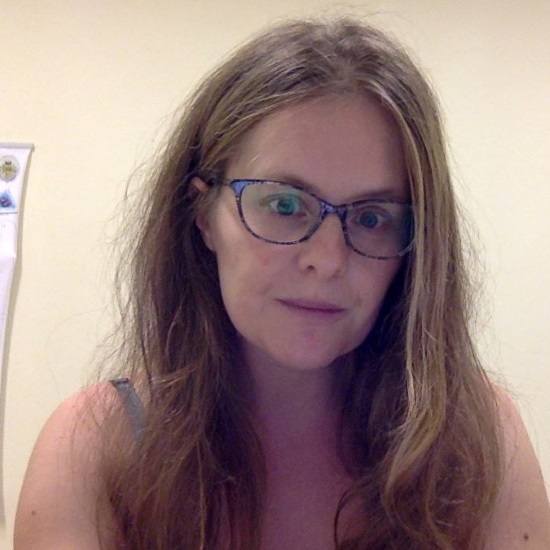
Professor Samuela Pasquali, University Paris Descartes, France

Professor Samuela Pasquali, University Paris Descartes, FranceProfessor Samuela Pasquali holds a PhD in statistical physics from New York University. She previously worked as junior faculty at Paris Diderot University for 8 years and in 2016 she became full professor at Paris Descartes University, in the school of Pharmacy. The focus of Professor Pasquali work is the study of nucleic acids, and RNA in particular, through modelling ans simulations. Professor Pasquali is also the main developer of the coarse-grained force field HiRE-RNA for the study of large conformational changes of RNA and DNA. Since her arrival at Paris Descartes, where she joined an experimental biophysical lab, Professor Pasquali has been working at integrating experimental data into the modelling process. |
|
| 16:45 - 17:00 | Discussion |
Chair

Dr Sarah Harris, University of Leeds, UK

Dr Sarah Harris, University of Leeds, UK
Dr Sarah A Harris obtained her first degree in Physics. She obtained a PhD from the Nottingham School of Pharmacy where she modelled drug-DNA interactions with Molecular Dynamics Simulations, and then moved to the Condensed Matter and Materials Physics group at University College London to work on Classical Nucleation Theory for her postdoctoral research project. As a lecturer in Biological Physics in Physics and Astronomy at Leeds, she now uses high performance supercomputing to model the physical properties of biological macromolecules, and to understand how these impart biological function. Current projects use atomistic computational models of proteins and nucleic acids to understand how dynamics and flexibility affect molecular recognition and how the shape and information content of DNA is influenced by supercoiling and packing within complex topologies. To understand the role of super-macromolecular organisation at the mesoscale, she is working with a multidisciplinary team or researchers from Mathematics, Physics and Biology at Leeds to construct a novel continuum mechanics model of proteins, known as Fluctuating Finite Element Analysis. She sits on the UK-wide committee for the Computational Collaborative Project for Biomolecular Simulation (CCPBioSim) and teaches undergraduate courses in Statistical Mechanics and Classical Thermodynamics.
| 09:00 - 09:30 |
Data driven Bayesian selection for coarse-grained models of liquid water
Coarse-graining (CG) is essential for molecular modeling to access time and length scales that are computationally beyond the reach of the conventional atomistic simulations. Despite numerous advances, coarse-graining often involves making several a priori assumptions, which are rarely systematically addressed. Dr Zavadlav investigates a number of CG models that differ in the level of coarse-graining and in the model complexity. The group will deploy Classical and Hierarchical Bayesian to quantify and calibrate the uncertainty of the models and to perform the model selection using experimental data. In this work it is found that compared to the single interaction site models the multiple sites models can be used at higher levels of coarse-graining. These models behave similarly in terms of reproducing the experimental data, however, they significantly differ in the computational cost. The group observed no significant improvement of models when going from rigid to flexible models, thus implying that one should use rigid geometries for efficiency reasons. Dr Zavadlav will present a data-informed rationale for the selection of CG water models and provide guidance for future water model designs. 
Dr Julija Zavadlav, ETH Zurich, Switzerland

Dr Julija Zavadlav, ETH Zurich, SwitzerlandDr Julija Zavadlav is a Postdoctoral Associate at ETH, Zürich, Switzerland. Dr Zavadlav obtained her PhD in Physics from the University of Ljubljana, Slovenia in 2015. While she was a PhD student (2011-2015) she was employed by the National Institute of Chemistry, Ljubljana, Slovenia. Since 2016 Jilija has been a part of the Computational Science & Engineering group at ETH, Zürich, Switzerland. In 2017 she has received the ETH Postdoctoral Fellowship. Her research interest is focused on multiscale simulation methods, Bayesian Uncertainty Quantification, and molecular modelling of soft and biological matter. |
|
|---|---|---|
| 09:30 - 09:45 | Discussion | |
| 09:45 - 10:15 |
Uniform vs. position-dependent coarse-graining: challenges and opportunities from variable resolution biomolecular modelling
All-atom models of soft matter systems promise realism and accuracy, at the price of intense computational effort and difficult parametrisation. Coarse-grained models offer faster sampling of larger systems for lighter computational effort, at the price of lower accuracy and -alas- difficult parametrisation. A deceptively simple way to take advantage of high- and low-resolution models is to make one in between - not so coarse, yet not too accurate; Such models are highly specialised, and might easily result in an unsatisfactory compromise. Alternatively, one can try to make a model that is both coarse and accurate, distributing the detail unevenly across the system. Multiple-resolution approaches combine in the same model two or more different representations, keeping the resolution high where chemical accuracy is necessary and employing a coarser description where possible. These methods have been developed for and applied to gases, liquids, solids, polymers, proteins, crystals and other systems. They are effective in reducing the computational cost of a simulation and useful to gain understanding of the system and its physico-chemical properties. Yet, the construction of multiple-resolution models is not free from conceptual and practical difficulties, and several open questions are in place when dealing with them. 
Professor Raffaello Potestio, University of Trento, Italy

Professor Raffaello Potestio, University of Trento, ItalyRaffaello Potestio graduated in Physics from the University of Rome “La Sapienza” in 2006, with a Master Thesis on Lattice Quantum Chromodynamics under the supervision of G. Martinelli. In the same year he enrolled in a PhD course in Statistical Physics at the International School for Advanced Studies (SISSA-ISAS) in Trieste. In 2010 he defended his PhD Thesis on Coarse-grained models of protein structure and interactions, supervised by C. Micheletti. In November 2010 he entered as postdoc the group of K. Kremer at the Max Planck Institute for Polymer Research in Mainz, where in August 2013 he became Project Leader of the Statistical Mechanics of BioMolecules group. |
|
| 10:15 - 10:30 | Discussion | |
| 10:30 - 11:00 | Coffee Break | |
| 11:00 - 11:30 |
Optimising cancer treatment by combining small-molecule cytotoxic drugs and nanoparticles: An in-silico quantitative analysis
The role of the tumour/host microenvironment mechano-biology and the mechanisms involved in the delivery of anti-cancer drugs is heavily investigated using in-vitro or/and in-vivo models. However, in-silico models offer a promising alternative to contemplate tumour progression, and the major factors affecting the transport of tumour-targeting molecules. Thus, Dr Vavourakis will present here a three-dimensional, cancer-specific, in-silico modelling framework of solid-tumour growth, angiogenesis and drug delivery. The model is novel in that it describes in a coupled and multiscale manner the drug transport in the vascular network and the tumour interstitial space, the interaction of the chemotherapeutic agent with the extracellular matrix, tumour regression as a function of the drug concentration, the remodelling of the tumour vasculature in response to the drug, and the biomechanics of the tumour and the host tissue. To identify optimal delivery of a cancer-killing drug, the group carried out a parametric analysis of in-silico cancer development / drug delivery simulations with respect to the binding properties of the chemotherapeutic agent and the tumour blood vessels permeability. The simulations describe a single-dose bolus injection of either small-sized molecules (1 nm) or a drug-borne nanoparticle (150 nm). The in-silico results suggest that tumour response to treatment is strongly dependent on the drug binding properties rather than the permeability of the tumour vessels. Importantly, increasing the binding affinity of the drug, remodels the tumour vasculature to obtain a more normal structure, thus, improving its functionality. These findings also suggest that enhancing the binding rate, the range of bolus injection time-window during which the tumour vasculature can be normalized become wider; which can lead to higher levels of perfused tumour vessels that may allow the delivery of higher drug concentrations to the tumour interstitial space in follow-up injections. 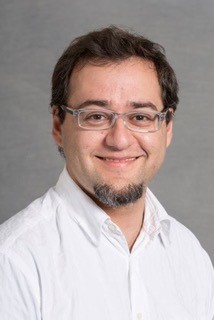
Dr Vasileios Vavourakis, University College London, UK

Dr Vasileios Vavourakis, University College London, UKDr Vasileios Vavourakis is an Assistant Professor at the Department of Mechanical & Manufacturing Engineering, University of Cyprus (UCY), and an Honorary Senior Lecturer at the Department of Medical Physics & Biomedical Engineering, University College London (UCL). Dr Vavourakis previously worked as a Senior Research Associate and a Marie Skłodowska-Curie Fellow at UCL's Centre for Medical Image Computing, a Visiting Lecturer and Research Associate at UCY's Polytechnic School, and as a post-doctoral fellow at the Foundation for Research and Technology - Hellas. Dr Vavourakis holds a PhD in Mechanical Engineering and a Diploma in Aeronautics, awarded by the University of Patras. He is also a member of the International Association of Computational Mechanics, the UK Association for Computational Mechanics, the Technical Chamber of Greece, and the Marie Curie Alumni Association. |
|
| 11:30 - 11:45 | Discussion | |
| 11:45 - 12:15 |
Towards Simulating Eukaryotic Cells at Single Molecule Resolution
One of the key unsolved challenges at the interface of physical and life sciences is to formulate comprehensive computational modeling of the whole eukaryotic cell, at a single molecule resolution, which would deeply integrate reaction-diffusion, mechanical-structural and transport processes of cell's salient mechanochemical modules. Towards addressing this problem, the group has developed a unique reactive mechanochemical force-field and software, called MEDYAN (Mechanochemical Dynamics of Active Networks: http://medyan.org). MEDYAN integrates dynamics of multiple mutually interacting phases: 1) a spatially resolved solution phase is treated using a reaction-diffusion master equation; 2) a polymeric gel phase is both chemically reactive and also undergoes complex mechanical deformations; 3) flexible membrane boundaries interact mechanically and chemically with both solution and gel phases. The above-mentioned computational components constitute the fundamental ingredients for minimal modeling of eukaryotic cells at a single molecule resolution. In this talk, Professor Papoian will outline our recent progress in simulating multi-micron scale cytosolic/cytoskeletal dynamics at 1000 seconds timescale, and also highlight the outstanding challenges in bringing about the capability for routine molecular modeling of eukaryotic cells. 
Professor Garegin Papoian, University of Maryland, USA

Professor Garegin Papoian, University of Maryland, USAProfessor Garegin Papoian is the Monroe Martin Professor at UMD, serving also as the Director of the Chemical Physics Graduate Program. He uses advanced computational methods to study biological processes at multiple scales, from protein functional dynamics and chromatin folding to cell-level processes, such as cell motility and other related mechanobiological phenomena. In the latter area, Professor Papoian has been developing novel analytical and simulational approaches for understanding the fundamental principles governing self-assembly and dynamics of cellular cytoskeletons comprised of actin filaments, microtubules and various other associated proteins. These complex, far-from-equilibrium mechano-chemical systems exemplify biological active matter, which is still poorly understood. Papoian group has recently developed a pioneering cytoskeletal simulation force field and associated software, MEDYAN (http://medyan.org/), which combines stochastic reaction-diffusion treatment of cellular biochemical processes with polymer physics of cytoskeletal filament network growth, emphasizing the coupling between chemistry and mechanics. The Papoian laboratory used insights gained from extensive MEDYAN simulations, to develop a general theory of elementary force dipoles that comprise contractile acto-myosin networks. |
|
| 12:15 - 12:30 | Discussion |
Chair

Professor Radek Erban, University of Oxford, UK

Professor Radek Erban, University of Oxford, UK
Professor Radek Erban is a Royal Society University Research Fellow, a Professor of Mathematics at the University of Oxford and a Fellow of Merton College, Oxford. He works on the development, analysis and application of mathematical and computational methods to a broad range of real-world systems, with a focus on problems in which stochastic effects and multiscale phenomena play a key role. The main application areas include molecular-based modelling of intracellular processes (for example, actin dynamics and calcium dynamics) and studying collective behaviour of cells, animals and robots. In recent years, he focused his attention on multi-resolution methods which would enable simulation of complex intracellular processes (which take place across the whole living cell) with fine resolution of molecular dynamics. He received a European Research Council Starting Grant in 2009 and a Philip Leverhulme Prize in 2010. In Oxford, he previously held junior research fellowships at Brasenose College (2011-2014), Somerville College (2008-2011) and Linacre College (2005-2008). In Cambridge, he was also a visiting fellow of Peterhouse (2016) and a recipient of the Simons Foundation Fellowship at the Isaac Newton Institute in 2016.
| 13:30 - 14:00 |
Dimensionality reduction aides scale-bridging in multi-resolution simulations of conformational landscapes
Simulations have become an important complement to experimental structural biological approaches since they provide a molecular-level view on structural ensembles and dynamics of conformational transitions or aggregation processes on ns to ms timescales. In recent years, multiscale simulation methods that combine classical atomistic and coarse grained levels of resolution have gained popularity in the biomolecular simulation community. While the coarse grained level extends the accessible length and timescales compared to an all-atom model, a systematic link to an atomistic level of resolution allows to maintain information from a more accurate representation. In the talk, Professor Peter will present an example of how such a multiresolution approach in combination with advanced analysis methods can be used to investigate and characterize the structural variability of multidomain proteins and protein conjugates. Professor Peter will show how dimensionality reduction can be employed to characterize the sampling of free energy landscapes of such multidomain systems and to assess the consistency of the sampling in models at different levels of resolution. These methods are optimally suited to identify, compare, and classify relevant conformational states and to guide the interpretation of the simulations with respect to experimental data. 
Professor Christine Peter, University of Konstanz, Germany

Professor Christine Peter, University of Konstanz, GermanyChristine Peter has studied chemistry and mathematics at the University of Freiburg, Germany. In 2003 she obtained her PhD at the ETH Zurich working on molecular dynamics simulation of biomolecular systems. Subsequently worked at the National Institutes of Health (Bethesda, USA) and the Max Planck Institute for Polymer Research (Mainz, Germany). Since 2013, she is a professor for theoretical and computational chemistry at the University of Konstanz, Germany. The group studies biological systems and biomaterials, addressing questions related to peptide and protein folding and aggregation, mineral nucleation or interactions at (bio)polymer/mineral interfaces. The research focus Iies on the development and application of hierarchical simulation approaches that systematically link models at several levels of resolution. |
|
|---|---|---|
| 14:00 - 14:15 | Discussion | |
| 14:15 - 14:45 |
Multiscale modelling of complex biomolecular systems
Recent experimental and computational advances allow investigations of liquid biomolecular solutions at spatial and temporal scales (nanometers, nanoseconds) where two representations are equally valid and necessary: atomistic and continuous (fluid dynamics). Examples of the former include MD simulations of systems composed of tens of millions of atoms or cryo-EM measurements of complete viruses and cell organelles with atomistic resolution. The latter is represented, for example, by the multitude of nano- and micro-fluidic devices including, among others, non-contact liquid atomic force microscopy capable of measuring flows of liquids at atomistic scales. Despite comparable quality of theoretical predictions using both atomistic and continuum representations, the physics behind them is fundamentally different, from the basic concepts (discrete atoms vs continuum of matter) to the equations of motion describing the system’s structure and dynamics. This disparity becomes particularly obvious if the problem at hand requires transition between the scales or the description of the same system at different scales simultaneously. Dr Nerukh will present the recent attempts to develop a unified description of liquid systems such that they are described by the same equations of motion throughout multiple scales, from atomistic to macroscopic hydrodynamic. Two different frameworks will be described each having a set of equations that are valid equations of motion at both limiting scales, MD and hydrodynamic, and at all scales between these extremes. The frameworks are physically consistent, obeying fundamental conservation laws (of mass, momentum, and energy) at all scales. Examples of applying these frameworks to the complete virus in aqueous solution and flows in nanofluidic channel will also be given. 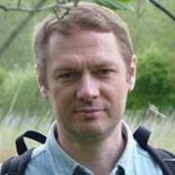
Dr Dmitry Nerukh, Aston University, UK

Dr Dmitry Nerukh, Aston University, UKAfter a number of postdoctoral positions at various Universities in the UK and USA, Dr Nerukh worked as a senior research associate at Department of Chemistry, Cambridge University, UK, before accepting permanent position at Aston University as a lecturer. Dr Nerukh work has led to the development of an original numerical method for Bohmian quantum dynamics and fundamentally new approaches for the complex dynamics of classical molecular systems that applies state of the art mathematical theory of complexity of dynamical systems. His most recent research includes the development of multiscale hybrid Molecular Dynamics / Hydrodynamics framework for modelling large biomolecular systems at several spatial and temporal scales simultaneously. Such systems include all-atom models of entire viruses in solution. He has published over 50 papers and is PI or co-Pi on ten major grants. |
|
| 14:45 - 15:00 | Discussion | |
| 15:00 - 15:30 | Tea | |
| 15:00 - 15:30 | Tea break | |
| 15:30 - 16:00 |
No equations, no variables, no parameters, no space, no time: data and the modelling of complex systems
Obtaining predictive dynamical equations from data lies at the heart of science and engineering modeling, and is the linchpin of our technology. In mathematical modeling one typically progresses from observations of the world (and some serious thinking!) first to equations for a model, and then to the analysis of the model to make predictions. Good mathematical models give good predictions (and inaccurate ones do not) - but the computational tools for analyzing them are the same: algorithms that are typically based on closed form equations. While the skeleton of the process remains the same, today we witness the development of mathematical techniques that operate directly on observations -data-, and appear to circumvent the serious thinking that goes into selecting variables and parameters and deriving accurate equations. The process then may appear to the user a little like making predictions by "looking in a crystal ball". Yet the "serious thinking" is still there and uses the same -and some new- mathematics: it goes into building algorithms that jump directly from data to the analysis of the model (which is now not available in closed form) so as to make predictions. This work here presents a couple of efforts that illustrate this "new” path from data to predictions. It really is the same old path, but it is travelled by new means. 
Professor Yannis G Kevrekidis, Johns Hopkins University, USA

Professor Yannis G Kevrekidis, Johns Hopkins University, USAProfessor Kevrekidis’ research interests have always centred around the dynamic behaviour of physical, chemical, and biological processes; the types of instabilities they exhibit; the patterns they form; and their computational study. More recently, he has developed an interest in multiscale computations and the modelling of complex systems. Along with several students and collaborators, he developed what he calls the ‘equation-free’ approach to complex systems modelling, explored its capabilities in several areas, and is now working on linking it with modern data mining/machine learning techniques in what could be called an ‘equation-free and variable-free’ approach. |
|
| 16:00 - 16:15 | Discussion | |
| 16:15 - 17:00 |
Overview, future directions and discussion

Dr Sarah Harris, University of Leeds, UK

Dr Sarah Harris, University of Leeds, UKDr Sarah A Harris obtained her first degree in Physics. She obtained a PhD from the Nottingham School of Pharmacy where she modelled drug-DNA interactions with Molecular Dynamics Simulations, and then moved to the Condensed Matter and Materials Physics group at University College London to work on Classical Nucleation Theory for her postdoctoral research project. As a lecturer in Biological Physics in Physics and Astronomy at Leeds, she now uses high performance supercomputing to model the physical properties of biological macromolecules, and to understand how these impart biological function. Current projects use atomistic computational models of proteins and nucleic acids to understand how dynamics and flexibility affect molecular recognition and how the shape and information content of DNA is influenced by supercoiling and packing within complex topologies. To understand the role of super-macromolecular organisation at the mesoscale, she is working with a multidisciplinary team or researchers from Mathematics, Physics and Biology at Leeds to construct a novel continuum mechanics model of proteins, known as Fluctuating Finite Element Analysis. She sits on the UK-wide committee for the Computational Collaborative Project for Biomolecular Simulation (CCPBioSim) and teaches undergraduate courses in Statistical Mechanics and Classical Thermodynamics. |
